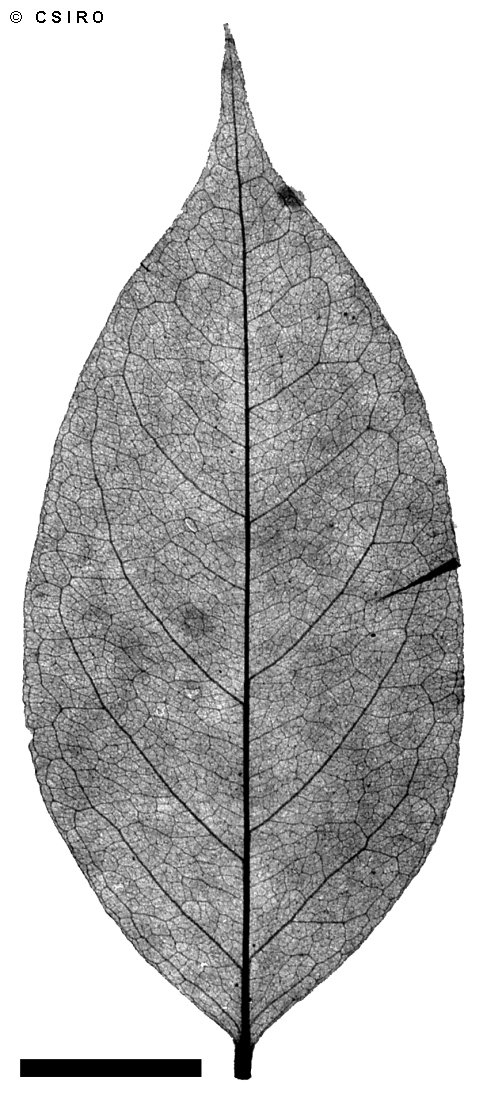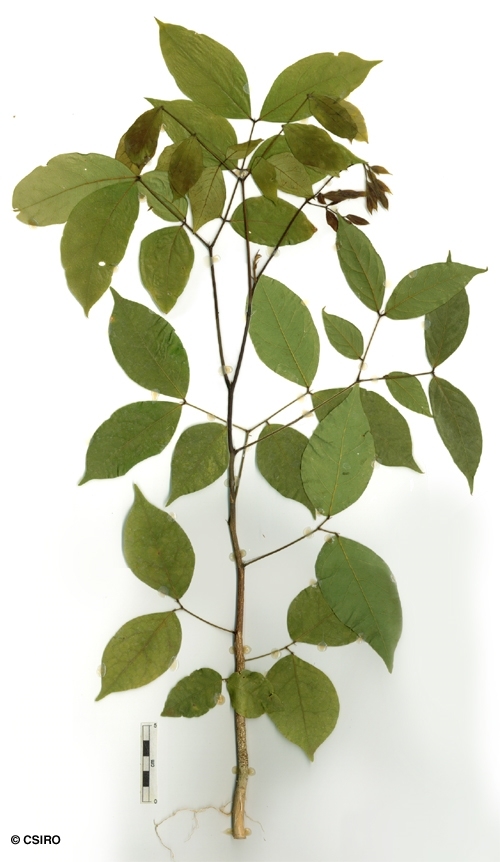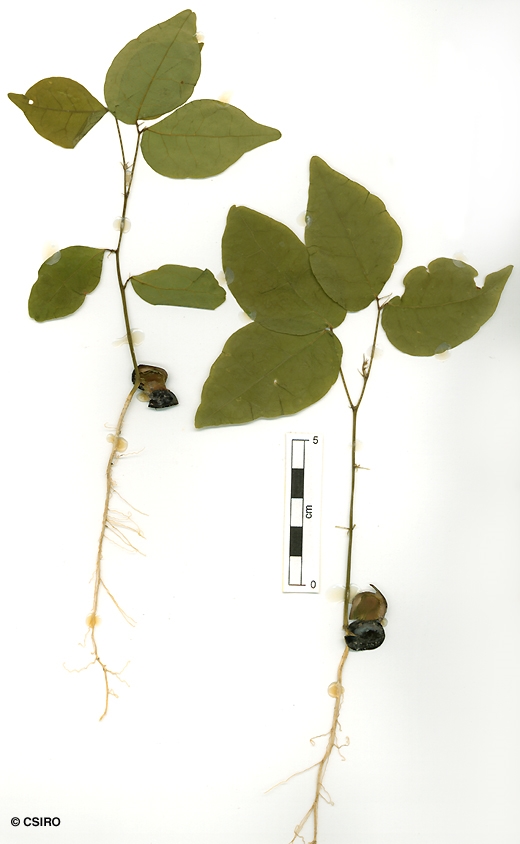Australian Tropical Rainforest Plants - Online edition
Archidendron grandiflorum (Sol. ex Benth.) I.C.Nielsen




Nielsen, I.C. (1982) Nordic Journal Botany 2: 481.
Fairy Paint Brushes; Siris, Tulip; Snowwood; Tulip Siris; Tulip; Pink Laceflower; Laceflower Tree; Fairy Paintbrush; Marblewood
Usually a small tree but can flower and fruit as a shrub. Pale granular and dark fibrous stripes in the blaze.
Rather large glands usually present on the upper surface of the secondary compound leaf axes at the base of each pair of leaflets. Similar glands present on the primary compound leaf axis (rhachis) where the secondary axes are attached. Glands also present on the upper surface of the compound leaf petiole. Leaflet blades about 3.1-8.6 x 1.5-4.4 cm. Leaflet stalks about 0.2-0.4 cm long. Terminal buds clothed in rusty brown hairs.
Staminal filaments about 25-50 mm long, cream in the lower half but red, pink or mauve in the upper half.
Fruits orange-red or orange on the inner surface. Seeds about 12-14 x 8-10 mm.
Cotyledons green but held at or below ground level. Cataphylls stipulate, usually produced before the first pair of true leaves. First pair of leaves compound with two leaflets, each leaflet with an elongated gland at the base near its junction with the leaflet stalk. At the tenth leaf stage: leaves compound, bipinnate, leaflets ovate, about 55-60 x 20-30 mm, apex acuminate with a short mucro, base cuneate or obtuse, midrib raised on the upper surface; leaflet stalks about 3-4 mm long; cup-shaped glands visible on the upper surface of the secondary leaf axes between pairs of leaflets. Stipules small, triangular and caducous, about 3-6 x 0.5 mm. Seed germination time 8 to 319 days.
An outstanding tree already in cultivation, known for its beautiful pink and white flowers. This species is one of the few native plants known to have been used as an aphrodisiac by the aborigines. Cribb (1981).
Seldom grows large enough to produce millable logs. Produces a decorative general purpose timber.
Wood specific gravity 0.62. Cause et al. (1989).





